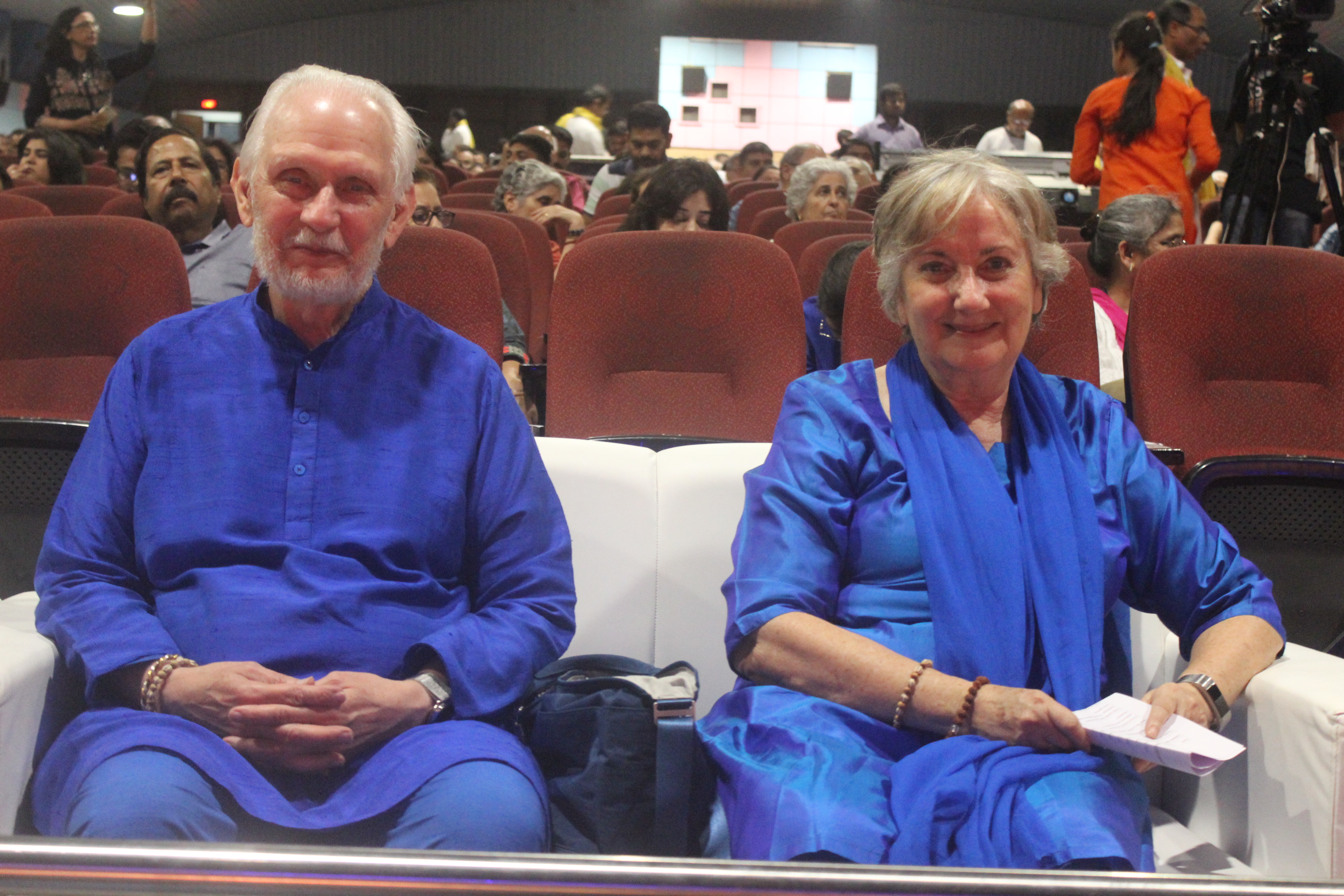It was one of the most remarkable evenings of my life. I sat mesmerized, along with nearly two thousand five hundred others in the auditorium, listening to ragas played by some of India’s finest musicians. Shiv Kumar Sharma and Hari Prasad Chaurasia have spent a lifetime mastering Indian classical music and have been awarded the highest honors of a grateful nation.
 Indians will be well aware of their names and reputations, but for those from the West who haven’t heard their movie soundtracks or albums, perhaps a little introduction is needed. Shiv Kumar plays the santoor, an instrument with a hundred strings and a unique sound, played as a percussion instrument with small wooden hammers, a little like a blend between a sitar and a hammered dulcimer. But, to quote P.G. Wodehouse, that is like ”describing the Taj Mahal as a pretty nifty tomb.”
Indians will be well aware of their names and reputations, but for those from the West who haven’t heard their movie soundtracks or albums, perhaps a little introduction is needed. Shiv Kumar plays the santoor, an instrument with a hundred strings and a unique sound, played as a percussion instrument with small wooden hammers, a little like a blend between a sitar and a hammered dulcimer. But, to quote P.G. Wodehouse, that is like ”describing the Taj Mahal as a pretty nifty tomb.”
Hari Prasad plays the Indian wooden flute. When hearing him, one begins to appreciate why Lord Krishna is depicted as entrancing devotees with his flute. They were accompanied by Vijay Ghate on tabla and Bhawani Shankar on the pakhawaj, a large, barrel-shaped wooden drum. They, too, are famous musicians, and the four of them often play together. In fact, Shiv and Hari are lifelong friends and have played together for sixty-one years.
In his introduction to the evening, Shiv Kumar said that Indian classical music and Indian spirituality are two sides of the same coin. The next morning, as we sat together with them at breakfast, Shiv said that he had read Autobiography of a Yogi many times, and felt that the concert’s special magic was all due to the guru’s grace. The concert was dedicated to Yoganandaji, this being the 125th anniversary of his birth, and was a fundraising event for the Paramhansa Yogananda Charitable Trust, which serves many thousands of widows in Brindaban, India.
In his Autobiography Paramhansa Yogananda says, “In India, music as well as painting and the drama is considered a divine art. Brahma, Vishnu, and Shiva—the Eternal Trinity—were the first musicians. The Divine Dancer Shiva is scripturally represented as having worked out the infinite modes of rhythm in His cosmic dance of universal creation.” The ragas have a power to bring one’s energy inward and upward and to connect one to God.
The duet between the santoor and the flute, going back and forth with increasing complexity and intensity, seemed like a dialogue in heaven. Add to this the tabla and pakhawaj and it felt like a conversation among four Gods, who were talking, laughing, teasing, competing, and uplifting one another in a language that bypassed the mind and went straight to the heart and soul.
The whole purpose of the spiritual path is to raise the consciousness, drawing it inward and upward, dissolving the separation of ego. Absorption in whatever we love leads to losing our sense of isolation and merging with a greater reality. Meditation is one way of doing this; so also is the divine art of uplifted music.
 Try it for yourself by listening to a recording of the concert. (The video is here.) I suggest that you listen in a setting where you can be silent and inward. I would even recommend that you use earphones and prepare to sit in silence after the music finishes. I think you will be transported to a higher realm. Devi and I, along with all of the others in the concert hall, certainly were.
Try it for yourself by listening to a recording of the concert. (The video is here.) I suggest that you listen in a setting where you can be silent and inward. I would even recommend that you use earphones and prepare to sit in silence after the music finishes. I think you will be transported to a higher realm. Devi and I, along with all of the others in the concert hall, certainly were.
In the eternal AUM,
Nayaswami Jyotish
Subscribe to the Touch of Light podcast. Download the audio recording of this week’s blog by right-clicking here. Or listen to it here (5:10):
You may also enjoy reading Swami Kriyananda’s book, Art As a Hidden Message: A Guide to Self-Realization. Or viewing more photos from the event via Facebook.
8 Comments
Thank you so much. It was wonderful to read and good to know that you enjoyed the programme.
very nice thank you
Great! Beautiful music
Dear Nayaswami Jyotish Ji,
Thank you sharing the inspiration.
Joy
Prem
Thank you Jyotish, your description beautifully matched your experience. The music is heavenly.
This beautiful music goes right to my heart and soul
Dear Jyotish ji,
“The duet between the santoor and the flute, going back and forth with increasing complexity and intensity, seemed like a dialogue in heaven….”
Love these words :) so true..
Listening to it is so beautiful, when in silence. Gurus Grace and Swamiji’s love flowing through..
Thanks for sharing the Joy:)
Hi Everyone, I would like to know how I can get a copy of the vidio. Also the sound track of other of these players. And one more the sound track of chant made for temlpe of light. In other words in need a form of this wonderful music that I can put on a file a take with me So far as I know You Tube will not allow that and these links are to You Tube. As always, I am , yours in Gods Love James